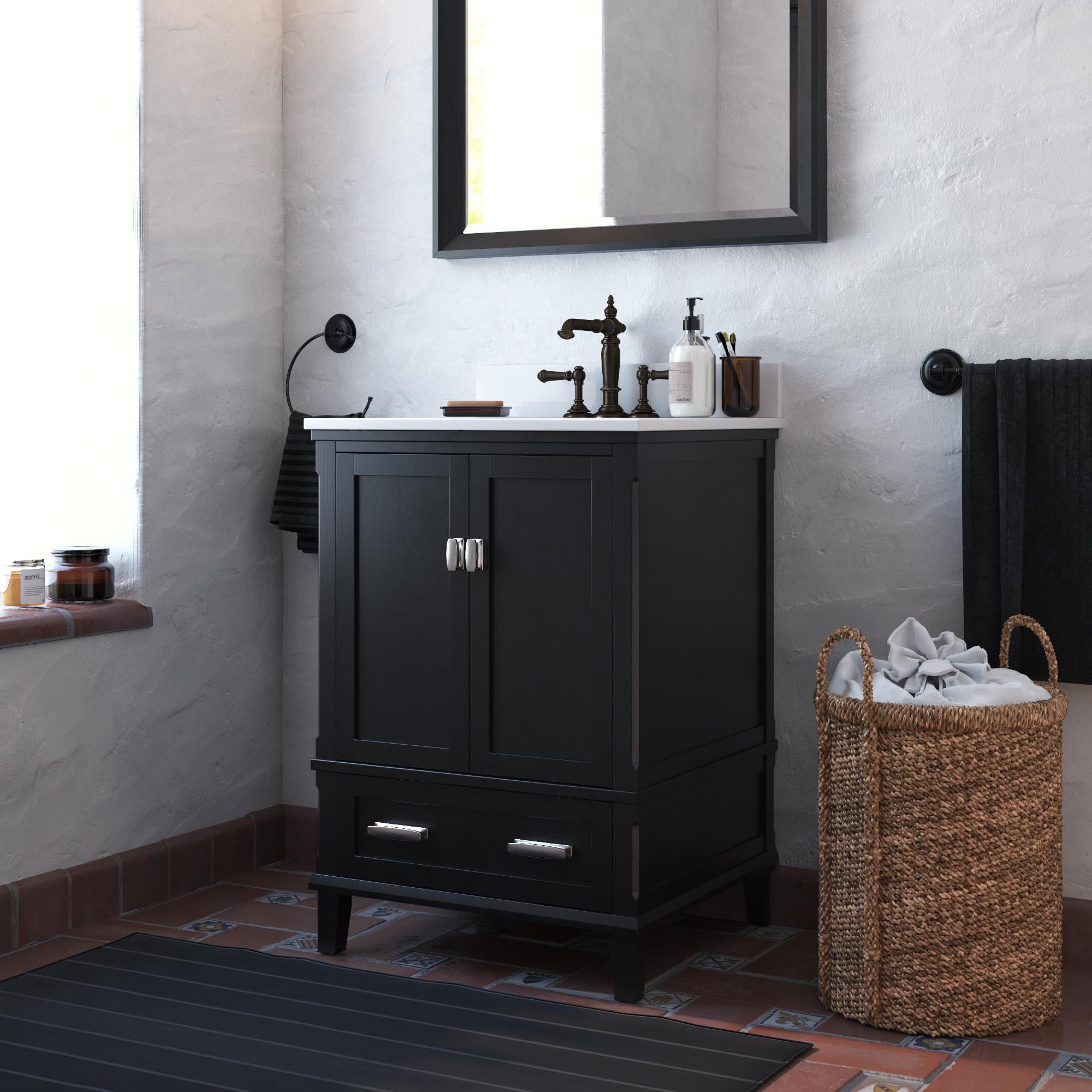Installation and Maintenance of a 24″ Black Bathroom Vanity Cabinet: 24 Black Bathroom Vanity Cabinet

Installing a 24″ black bathroom vanity cabinet can enhance your bathroom’s aesthetics and functionality. This guide provides detailed instructions on installation and maintenance to ensure a smooth process and prolong the cabinet’s lifespan.
Installation of a 24″ Black Bathroom Vanity Cabinet, 24 black bathroom vanity cabinet
Installing a 24″ black bathroom vanity cabinet requires careful planning and execution. The process involves plumbing, electrical, and countertop installation, ensuring proper functionality and a seamless integration into your bathroom.
- Preparation:
- Clear the area around the installation site. Remove existing fixtures and cabinets.
- Check the cabinet’s dimensions and ensure it fits the designated space.
- Locate and mark the position for the vanity cabinet on the floor.
- Plumbing Installation:
- Connect the water supply lines to the vanity’s faucet. Ensure the connections are tight and leak-proof.
- Install the drain pipe, connecting it to the existing waste line. Ensure proper drainage and prevent clogs.
- Electrical Installation:
- If the vanity includes electrical outlets, install them according to local electrical codes.
- Ensure the wiring is properly grounded and connected to the electrical panel.
- Countertop Installation:
- Install the countertop, ensuring it fits snugly and securely on the vanity cabinet.
- Use appropriate adhesives and fasteners for a secure and water-resistant connection.
- Final Touches:
- Install the faucet and any other fixtures on the countertop.
- Clean the cabinet and countertop thoroughly to remove any debris or residue.
Maintenance of a 24″ Black Bathroom Vanity Cabinet
Proper maintenance is crucial for preserving the appearance and functionality of a 24″ black bathroom vanity cabinet. Regular cleaning, preventing water damage, and addressing minor issues promptly can extend its lifespan significantly.
- Cleaning Techniques:
- Clean the cabinet regularly using a mild soap and water solution. Avoid harsh chemicals or abrasive cleaners that can damage the finish.
- Wipe down the countertop and sink after each use to prevent water stains and mineral buildup.
- For stubborn stains, use a specialized cleaner designed for bathroom surfaces. Follow the manufacturer’s instructions carefully.
- Preventing Water Damage:
- Ensure proper ventilation in the bathroom to prevent moisture buildup and mold growth.
- Wipe up spills promptly to prevent water from seeping into the cabinet.
- Inspect the plumbing connections regularly for leaks and address them promptly.
- Extending Lifespan:
- Avoid overloading the cabinet with heavy items to prevent structural damage.
- Close drawers and doors gently to prevent damage to hinges and handles.
- Replace worn-out or damaged parts promptly to prevent further deterioration.
Tools and Materials for Installation
A comprehensive list of tools and materials is essential for a successful installation.
- Tools:
- Level
- Tape measure
- Screwdriver
- Drill
- Wrench
- Pliers
- Caulk gun
- Utility knife
- Materials:
- Vanity cabinet
- Countertop
- Faucet
- Drain pipe
- Water supply lines
- Screws
- Adhesives
- Caulk
- Electrical wiring (if applicable)
Cleaning and Caring for a 24″ Black Bathroom Vanity Cabinet
- Daily Cleaning: Wipe down the countertop, sink, and cabinet doors with a damp cloth and mild soap. Ensure all surfaces are dry before closing drawers and doors.
- Weekly Cleaning: Thoroughly clean the cabinet, including drawers and shelves, using a damp cloth and mild soap. Pay attention to corners and crevices to remove any accumulated dirt or grime.
- Monthly Cleaning: Use a specialized bathroom cleaner to deep clean the cabinet, countertop, and sink. Pay particular attention to areas prone to water stains or mineral buildup.
- Regular Inspections: Inspect the cabinet for any signs of damage, such as scratches, dents, or loose hinges. Address these issues promptly to prevent further deterioration.
- Preventative Measures: Avoid placing heavy items on the countertop or inside the cabinet to prevent structural damage. Close drawers and doors gently to prevent damage to hinges and handles.
